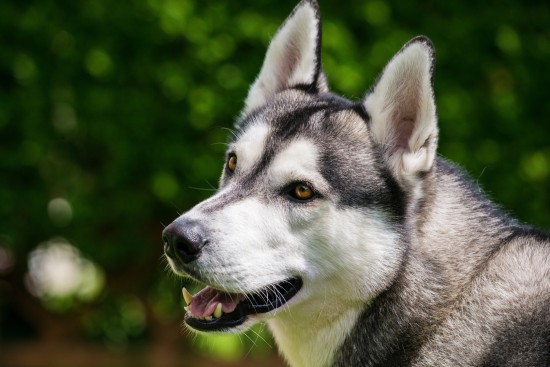Wood bison are the largest land-dwelling mammals in North America. They are currently classified as a threatened species, as per the Committee on the Status of Endangered Wildlife in Canada (COSEWIC). Parks Canada has taken action against the threat to wood bison, and have a full recovery plan in force. Currently, wood bison can be found in these three free-range populations in Canada: the Mackenzie population (between Fort Providence and Yellowknife), the Nahanni population (along the Liard River Valley south into northeastern British Columbia and southeastern Yukon Territory), and the Wood Buffalo National Park population (in northeastern Alberta and southern Northwest Territories). While you won't see a free-roaming wood bison from the window of your Fort McMurray apartment, you can pay the wood bison a visit when you go to the Wood Buffalo National Park, which has the largest population of wood bison. Here are some fun facts about wood bison to keep in mind on your visit to Wood Buffalo National Park.
Bachelor Living
Male Wood bison live a life fit for a bachelor; they tend to live in solitude, and will only join larger herds with female Wood bison when it is time for them to mate. Mating season is between June and September, with peak mating activity in July and August. If you book a Fort McMurray rental between April and May, you will have the exciting opportunity to witness the births of baby calves, as the gestation period is between 270-285 days. The litter size is usually just one calf. Baby calves stay with the mother until they are sexually mature. Similar to humans, women mature faster than men (note: this is an observation, not a fact); male bison are fully mature after six years, whereas female bison are fully mature after three years. Wood bison are very social creatures; when a male bison reaches the age of three, they join a herd with other bachelors. Since they move around so frequently, they rarely overgraze an area.
Physiology
Wood bison are often confused with Buffalo, but can be distinguished from Buffalo by their large shoulder that is humped. They have short legs and a long tail, with a furry end, which is called a tuft. The fur on a wood bison is dark-brown, and it is so thick that snow can cover their backs without melting. In the summer, their fur sheds, so they don't get too hot. Just above their eyes are short, black, curved horns which they use to protect themselves from predators. Since they have poor vision, they have to rely on their sense of smell to warn them of potential attackers. Luckily, their sense of smell is very strong, and they are able to smell an animal that is three kilometers away.
Threats to Survival
Wood bison are a threatened species, but are currently making a comeback. The main threat of wood bison is disease. There are three major bacterial diseases which affect wood bison today (brucellosis, bovine tuberculosis, and anthrax). Important measures are in place to reduce the spread of disease to healthy herds.

 Good Sports And Activities For Siberian Husky Dogs
Good Sports And A
Good Sports And Activities For Siberian Husky Dogs
Good Sports And A
 The Work Of The Canine Eye Registration Foundation
The Work Of The C
The Work Of The Canine Eye Registration Foundation
The Work Of The C
 5 Great Dog Breeds To Share Your Retirement Years With
5 Great Dog Breed
5 Great Dog Breeds To Share Your Retirement Years With
5 Great Dog Breed
 Get the perfect BC German Shepherds for you
Get the perfect BC German Shepherds for you
Ar
Get the perfect BC German Shepherds for you
Get the perfect BC German Shepherds for you
Ar
 5 Types Of Hernia Commonly Seen In Dogs
5 Types Of Hernia
5 Types Of Hernia Commonly Seen In Dogs
5 Types Of Hernia